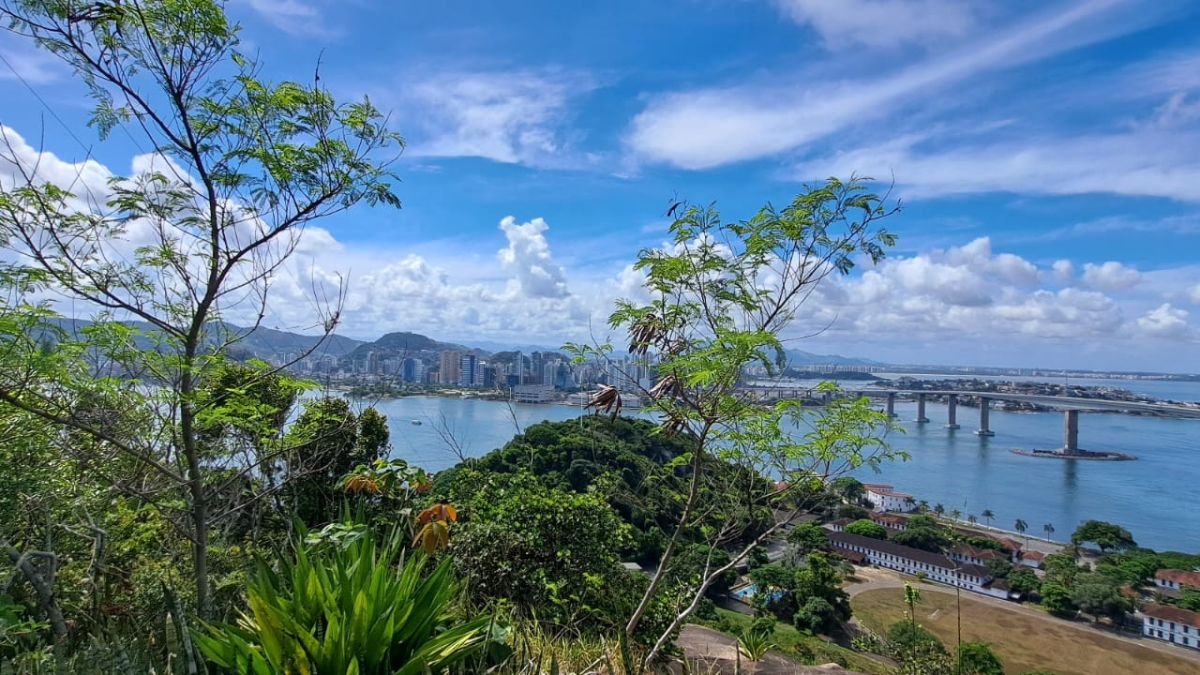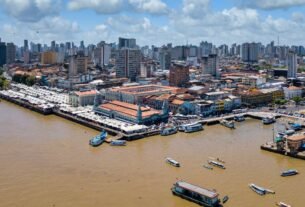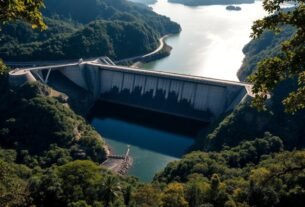Introduction
Have you ever wondered what makes Espírito Santo one of Brazil’s most captivating states? Nestled between the mountains of Minas Gerais and the Atlantic Ocean, this coastal gem offers a unique blend of natural beauty and cultural richness that is truly unparalleled.
With 715 kilometers of stunning shoreline, it’s a paradise for beach lovers and adventurers alike, where you can find everything from tranquil coves to vibrant beach towns. The diverse landscapes range from lush forests to rocky cliffs, making it an ideal destination for those who appreciate both relaxation and outdoor activities.
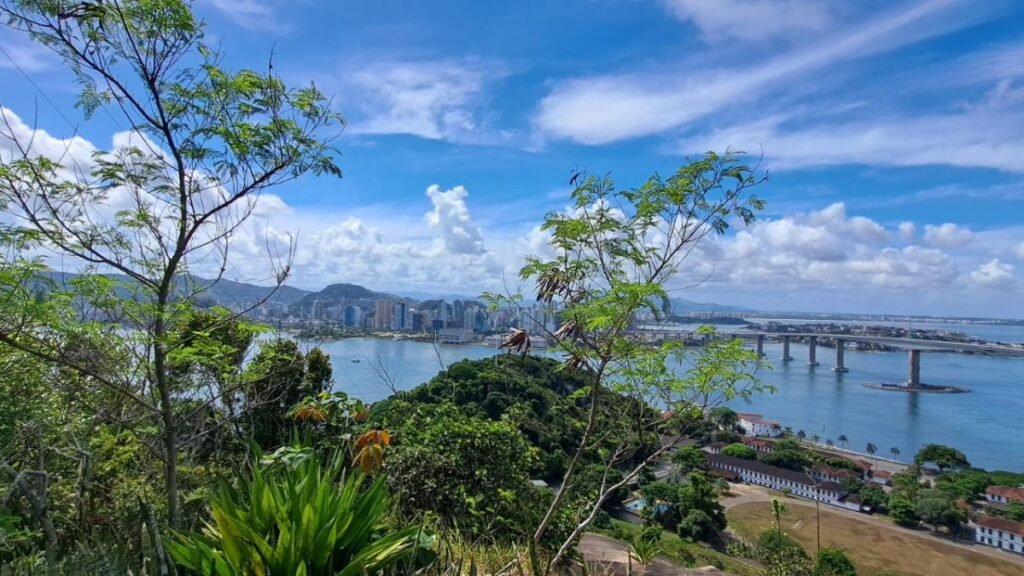
The state’s area, comparable to Estonia, is home to a diverse population of over 4 million people. Its thriving economy, driven by industries like steel, contributes significantly to Brazil’s GDP. However, what truly sets this region apart is its rich cultural tapestry, shaped by the influences of Portuguese, Indigenous, and African cultures.
From its motto “Trabalha e Confia” (Work and Trust) to its vibrant anthem, Espírito Santo embodies resilience and pride. As you explore this article, you’ll discover six hidden gems that showcase the state’s natural wonders and cultural treasures.
Key Takeaways
- Espírito Santo boasts 715 kilometers of stunning coastline.
- The state’s area is comparable to the size of Estonia.
- It has a diverse population with rich cultural influences.
- Positioned between mountains and beaches, it offers unique landscapes.
- Known for its thriving steel industry and high Human Development Index (HDI) ranking.
1. Espírito Santo
With its island capital and diverse landscapes, this region is a hidden gem in Brazil. Strategically located between Bahia and Rio de Janeiro, the state offers a unique blend of culture, history, and natural beauty. The picturesque coastline is dotted with stunning beaches, while the lush mountains provide a dramatic backdrop, making it a paradise for both nature lovers and adventure seekers.
The capital, Vitória, is an island city with a metro population of approximately 2 million. It’s one of the few island capitals in the world, making it a standout feature of the region. The city is known for its rich history, vibrant arts scene, and delicious cuisine, which showcases the diverse cultural influences that have shaped the area over the centuries.
The largest city, Serra, is a bustling hub that reflects the state’s rapid urbanization, with an impressive 82.2% urbanization rate. This urban growth has fostered a dynamic economy and a thriving community, drawing people from various backgrounds to experience the unique lifestyle that Espírito Santo has to offer.
The state’s climate varies from tropical along the coast to temperate in the highlands, creating a unique microclimate that supports a wide array of flora and fauna. This diversity supports a range of economic activities, including steel production, in which the region is a global leader, contributing significantly to both local and national economies.
It’s also Brazil’s second-largest coffee producer, with numerous plantations that benefit from the favorable climate, and a significant player in the oil industry, with offshore drilling contributing to the state’s wealth and development.
Cultural demographics add another layer of richness to the region. Communities with 60-75% Italian ancestry contribute to the vibrant cultural tapestry, influencing local festivals, cuisine, and traditions. This Italian heritage is celebrated through various events throughout the year, showcasing the unique blend of cultures.
Transportation hubs like Vitória’s port, a major exporter of iron, and Eurico de Aguiar Airport connect the region to the world, facilitating trade and tourism that further enrich the local economy and cultural exchange.
From mangroves to mountain ranges, the land is as diverse as its people. The Trindade and Martim Vaz volcanic islands add to the region’s unique geography, offering stunning landscapes and biodiversity that attract nature enthusiasts and researchers alike.
Historic roots date back to 1535, when Portuguese colonization began, shaping the state’s identity. Influences from Indigenous cultures and African heritage also played significant roles in shaping the region’s social fabric.
To learn more about this fascinating region, visit the Espírito Santo Wikipedia page.
2. The Enchanting Sand Dunes of Itaúnas
Nestled in the Conceição da Barra municipality, the sand dunes of Itaúnas are a natural wonder. These 30-meter-high migrating dunes cover 1,300 hectares and are protected within the Itaúnas State Park. Formed at the mouth of the Rio Itaúnas, this unique landscape is a testament to nature’s artistry.
The dunes are not only impressive in height but also in their ability to shift and change shape with the winds, creating an ever-evolving environment that captivates visitors. The surrounding flora and fauna thrive in this delicate ecosystem, with various plant and animal species adapted to the sandy terrain.
This biodiversity contributes to the region’s ecological balance and attracts researchers interested in studying these unique adaptations.
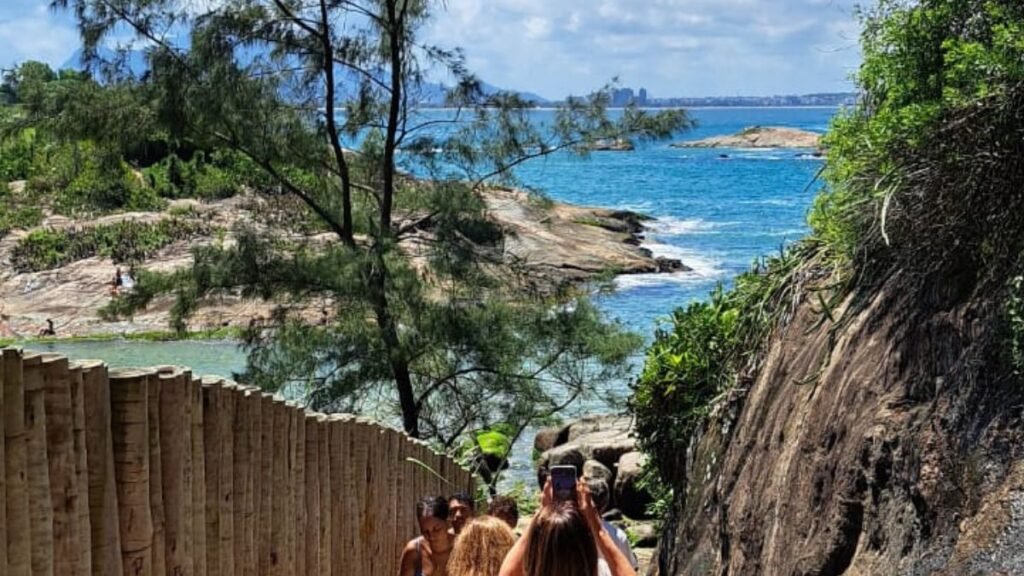
Explore the Unique Landscape
The dunes are constantly shifting, creating a dynamic environment that fascinates both scientists and visitors alike. This ongoing transformation is not only visually stunning, but it also plays a crucial role in the local ecosystem. Ecological protection measures ensure the fragile ecosystem remains intact, safeguarding the unique flora and fauna that have adapted to thrive in these sandy conditions. Visitors can enjoy activities like sandboarding or nocturnal turtle watching from October to March, immersing themselves in the natural beauty and excitement of this remarkable landscape.
Local legend speaks of a “Buried Village” beneath the dunes, adding a layer of mystery to this already captivating land. Tales of this lost village spark the imagination, suggesting that remnants of an ancient community lie hidden under the sands, waiting to be discovered. The park’s efforts to preserve this natural treasure make it a must-visit for eco-tourists, as they can explore not only the breathtaking scenery but also the rich stories that shape the region’s cultural identity.
Experience the Forró Tradition
Every June, the National Forró Festival transforms Itaúnas into a vibrant cultural hub, drawing in visitors from all over the country and beyond. This three-day event attracts over 50,000 attendees, showcasing not only the infectious rhythms of Forró music but also the warmth and hospitality of the local community.
Forró music, a captivating blend of European accordion melodies and African rhythms, fills the air, creating an unforgettable experience that resonates with both the young and the old, fostering a sense of unity and celebration among all who attend.
Pair your visit with local corn-based dishes, such as pamonha—a sweet corn pudding—and canjica, a traditional corn porridge, for a complete cultural experience. These delicious offerings are a testament to the region’s culinary heritage, enhancing the festival experience and allowing attendees to savor the flavors of the area.
The festival’s vibrant energy and rich traditions highlight the region’s unique heritage, making it a must-see event for anyone interested in Brazilian culture.
Accessibility is easy, with a four-hour drive from Vitória, making it convenient for both locals and tourists. Pousada stays offer comfortable accommodations, often decorated with local art and crafts, making it a perfect getaway for adventure and culture enthusiasts alike. Whether you’re dancing the night away or enjoying the lively street performances, the National Forró Festival promises an enriching experience that celebrates the heart and soul of Itaúnas.
3. The Majestic Pedra Azul State Park
Tucked away in the heart of Brazil, Pedra Azul State Park is a haven for nature enthusiasts. This stunning area is part of the Serra do Mar mountain range and features a 1,240-meter quartzite peak that dominates the landscape.
The park’s 12 kilometers of well-maintained trails cater to all skill levels, from beginners to seasoned hikers. These trails meander through diverse ecosystems, allowing visitors to immerse themselves in the lush surroundings and observe the rich wildlife that calls this area home.
The breathtaking views from various lookout points offer perfect opportunities to capture the region’s beauty in photographs, making each hike a memorable adventure.
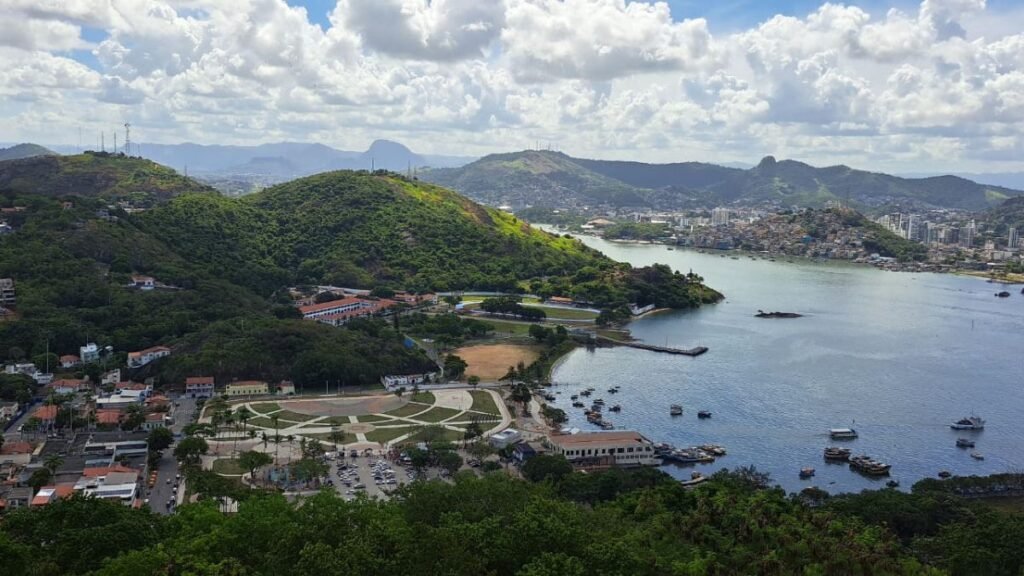
One of the park’s most iconic features is the Pedra Azul peak, known for its remarkable color-changing phenomenon. Depending on the time of day, the granite formation shifts between stunning shades of blue, soft gray, and radiant gold, creating a breathtaking visual experience that captivates all who visit.
This natural spectacle is a photographer’s dream, especially during sunrise hikes when the first light of dawn casts a magical glow over the landscape, enhancing the colors and shadows of the peak. The interplay of light and rock presents numerous opportunities for capturing unforgettable images that showcase the beauty of nature.
Hiking and Nature Trails
The park offers trails for every adventurer, ensuring that all visitors can find a path that suits their interests and abilities. Family-friendly paths wind through lush forests, offering a safe and enjoyable experience for families with children or those seeking a leisurely stroll.
Meanwhile, challenging routes test the endurance of experienced hikers, offering steep inclines and rugged terrain that reward the brave with panoramic views at the summit. Along the way, you’ll encounter rare flora like vibrant bromeliads, delicate orchids, and the towering jequitibá-rosa trees, each contributing to the park’s rich biodiversity and unique ecosystem.
The microclimate here creates enchanting morning mists that add a mystical touch to the landscape, transforming the trails into a serene and otherworldly experience. Birdwatchers will also delight in spotting some of the 168 bird species that call this park home, from colorful toucans to elusive hummingbirds, making every hike a chance to connect with nature and witness its wonders.
The Iconic Pedra Azul Peak
Pedra Azul’s historical significance dates back to German and Italian settlers who first explored the region, bringing with them their unique traditions and agricultural practices that shaped the local landscape. These early pioneers not only contributed to the cultivation of the land but also introduced various crops that are still celebrated today.
Today, nearby coffee plantations offer tours, allowing visitors to experience the local culture and learn about the intricate process of coffee production, from bean to cup, while sampling the rich flavors that this region is renowned for. Guided hikes are recommended for those looking to capture the peak’s beauty at sunrise, as the early morning light casts a magical glow over the rugged terrain, making it a photographer’s paradise.
Safety is a priority, so all visitors must register with park rangers before embarking on their adventure. This registration process not only ensures the safety of the hikers but also helps the rangers monitor the number of visitors and maintain the park’s pristine environment.
Whether you’re a nature lover, photographer, or history buff, Pedra Azul State Park promises an unforgettable experience filled with breathtaking vistas, diverse wildlife, and a chance to immerse yourself in the rich tapestry of history that defines this remarkable location.
4. The Historic Convento da Penha in Vila Velha
Perched high above Vila Velha, the Convento da Penha offers a glimpse into Brazil’s colonial past. Founded in 1558 by Franciscan friars, this iconic site stands at an elevation of 154 meters, providing breathtaking 360-degree views of the surrounding city and coastline.
The journey to the convent is as remarkable as the destination itself, with winding paths that invite visitors to appreciate the natural beauty of the area. It’s not just a religious landmark but a testament to the region’s rich history and cultural heritage. As you approach the impressive façade of the convent, adorned with intricate carvings and vibrant colors, it draws you in, hinting at the stories and traditions that have flourished here for centuries.
A Journey Through History
The Convento da Penha began as a modest wooden chapel and evolved into a grand stone complex that showcases the artistic vision of its creators. Its construction reflects a blend of colonial and baroque architectural styles, showcasing intricate details and craftsmanship that speak to the era’s dedication to beauty and spirituality.
The site played a strategic role during the Dutch invasion, serving as a military stronghold where defenders sought refuge and protection, thus intertwining its religious significance with a narrative of resilience and defense.
Inside, the convent houses the revered Nossa Senhora da Penha statue, dating back to the 16th century, which is not only a focal point of devotion but also a symbol of hope for many. The on-site museum displays 17th-century liturgical objects, including ornate chalices and vestments, offering visitors a deeper understanding of their spiritual and historical significance, as well as the rich traditions of worship that have evolved over the centuries.
Spiritual and Cultural Significance
Every year, over 1 million pilgrims visit the Convento da Penha, especially during Holy Week processions. This annual event highlights the site’s enduring role as a center of faith and devotion, drawing not only local worshippers but also tourists from far and wide who seek to experience the profound spiritual atmosphere.
Many pilgrims embark on this journey as a personal act of faith, often walking long distances to reach the convent, which symbolizes hope and perseverance. The panoramic views from the convent encompass the Vitória skyline, the Atlantic Ocean, and the bustling port, providing a breathtaking backdrop that enhances the spiritual experience and allows visitors to reflect on their journey in a serene setting.
Nearby attractions include Praia da Costa, renowned for its seafood restaurants, which make it a perfect complement to your visit. This beach is not only a culinary delight but also offers a vibrant atmosphere where visitors can unwind after a day of exploration.
The combination of sun, sand, and local cuisine creates an unforgettable experience. For the best experience, plan your trip around sunset to witness the stunning views as the sun dips below the horizon, painting the sky in hues of orange and pink. Adhere to the modest dress code required for entry to the convent, ensuring respect for its sacredness and the traditions it upholds.
| Key Facts | Details |
|---|---|
| Founded | 1558 by Franciscan friars |
| Elevation | 154 meters |
| Annual Visitors | 1 million pilgrims |
| Architectural Style | Colonial and Baroque |
| Nearby Attraction | Praia da Costa |
5. The Pristine Beaches of Guarapari
Guarapari’s coastline is a treasure trove of natural beauty and adventure. With 23 stunning beaches featuring unique monazite sands, this destination is a must-visit for travelers seeking both relaxation and excitement. The average water temperature of 25°C (77°F) makes it ideal for year-round enjoyment, inviting sunbathers and swimmers alike to indulge in the refreshing waters.
Each beach has its own unique character, offering a diverse range of experiences, from tranquil sunbathing spots to lively areas filled with beach bars and restaurants. Visitors can enjoy the sound of waves crashing against the shore while soaking up the sun or taking part in various beach activities.
Relaxation and Recreation
Guarapari’s beaches are famous for their therapeutic black sand, particularly at Praia Areia Preta, where the soothing properties of the sand are said to promote relaxation and wellness. The monazite sands are believed to possess healing properties, attracting visitors seeking natural wellness and rejuvenation.
Families will love Bacutia Beach, known for its calm waters and kid-friendly atmosphere, making it the perfect spot for children to play safely while parents relax. Additionally, the beach is lined with charming kiosks offering delicious local snacks and refreshments, enhancing the overall experience.
For those seeking adventure, Meaípe Beach is a hotspot for surfing, drawing both beginners and experienced surfers eager to catch the perfect wave. At the same time, Setiba Beach offers excellent snorkeling opportunities, thanks to its rich underwater life. The area’s nautical infrastructure includes dive shops and yacht charters, perfect for exploring the vibrant marine life and hidden coves along the coastline.
Whether you prefer a leisurely day at the beach or an adrenaline-pumping adventure, Guarapari has something to offer everyone, ensuring a memorable experience for all visitors.
Water Sports and Activities
Guarapari hosts the Brazilian Surf Championship, drawing surf enthusiasts from across the country. Schooner tours to Ilha Escalvada provide a unique way to explore the region’s coastal beauty. Don’t miss the chance to try moqueca capixaba, a traditional seafood dish served in clay pots.
Accessibility is a breeze, with Guarapari just a 50-minute drive from Vitória Airport (VIX). Combine your beach visit with a hike at nearby Mestre Álvaro for a well-rounded adventure. Always heed riptide warnings at wilder beaches for a safe and enjoyable experience.
6. The Cultural Richness of Vitória
Vitória, the capital of Espírito Santo, is a vibrant blend of history, culture, and modern charm. This island city is home to 46 historical landmarks, each telling a story of its colonial past and diverse heritage. From architectural marvels that reflect the influence of various periods in Brazilian history to lively festivals that celebrate local traditions and the arts, Vitória offers a unique cultural experience.
Visitors can immerse themselves in the vibrant atmosphere of the city by exploring its bustling markets, where local artisans showcase their crafts, and savoring the flavors of its unique cuisine, which is deeply rooted in the region’s history. The city’s rich tapestry of influences creates an inviting environment for both locals and tourists alike, making every visit a memorable experience.
Historic Sites and Architecture
Begin your exploration at Palácio Anchieta, a former Jesuit school that has since served as the seat of government. This iconic building showcases colonial architecture and offers guided tours that delve into its rich history. Nearby, the 16th-century São Tiago Fort stands as a reminder of the city’s strategic defense system.
For a deeper dive into Afro-Brazilian heritage, visit the Museu Capixaba do Negro. This museum chronicles the contributions of African descendants to the region’s culture. Art enthusiasts will appreciate Galeria Homero Massena, a hub for contemporary art and exhibitions.
Local Cuisine and Festivals
Vitória’s culinary scene is a treat for the senses. Sample street food like casquinha de siri, a flavorful crab cake, or visit the Garoto Chocolate Factory for a sweet experience. The city also celebrates its traditions through vibrant festivals.
In June, the Festa Junina lights up the city with music, dance, and sugarcane-based treats. October brings the Festa da Penha, a religious celebration that attracts thousands of pilgrims. For a lively experience, don’t miss the Capixaba Carnival in February, known for its colorful parades and energetic samba rhythms.
End your day exploring Jardim da Penha, a district famous for its nightlife. For a quieter escape, take a day trip to Santa Leopoldina, where Dutch architecture and serene landscapes await.
Conclusion
From shifting sand dunes to towering mountain peaks, Espírito Santo offers a journey like no other. This state is a treasure trove of natural beauty and cultural richness, making it a must-visit destination. Plan to spend 5-7 days exploring its diverse landscapes, from the pristine beaches of Guarapari to the historic Convento da Penha.
The region is also emerging as a hub for ecotourism, with efforts to preserve its unique ecosystems and gain UNESCO recognition for its cultural heritage. Travelers from the U.S. can enjoy direct flights from Miami to various destinations via LATAM Airlines, making access seamless.
For a deeper connection, consider homestays to immerse yourself in the local culture. The dry winter months, from May to September, are ideal for hiking and outdoor activities. As you explore, remember to practice responsible tourism to help preserve this incredible area for future generations.
Discover the magic of Espírito Santo and create memories that will last a lifetime. Whether you’re an adventurer, history buff, or culture enthusiast, this state has something for everyone. Learn more about Irresistible Brazilian Food.
FAQ
What makes Itaúnas Sand Dunes unique?
The Itaúnas Sand Dunes present a striking landscape of shifting sands, set against lush forests. Visitors can explore this natural wonder and immerse themselves in the local Forró music tradition.
What activities can I enjoy at Pedra Azul State Park?
Pedra Azul State Park is perfect for hiking and nature trails. The iconic Pedra Azul Peak is a must-see, offering breathtaking views and a chance to connect with nature.
Why is Convento da Penha in Vila Velha significant?
The Convento da Penha is a historic site of deep spiritual and cultural significance. It provides a glimpse into the region’s history and offers stunning views of the surrounding area.
What are the highlights of Guarapari’s beaches?
Guarapari’s beaches are renowned for their pristine beauty, making them ideal for relaxation and water sports. Visitors can enjoy swimming, surfing, and a variety of other recreational activities.
What cultural experiences does Vitória offer?
Vitória is rich in history, with historic sites and architecture. The city also boasts vibrant local cuisine and festivals, showcasing its cultural heritage.
What is the best time to visit Espírito Santo?
The best time to visit is during the dry season, from April to September, when the weather is pleasant for outdoor activities and exploring the region’s attractions.
How can I get to Espírito Santo?
Espírito Santo is accessible via Eurico de Aguiar Salles Airport in Vitória. The state also has a well-connected road network, making it easy to travel by car or bus.
What local dishes should I try in Espírito Santo?
Don’t miss the famous moqueca capixaba, a seafood stew, and other regional dishes like fresh seafood and corn-based recipes. These flavors are a highlight of the local cuisine.

